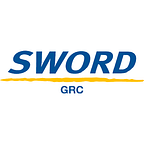Risks can arise at any time in the project lifecycle and without appropriate management, can hinder your chances of project success. How can project teams avoid or minimise the impact of potential risks that could impede the project from attaining its goals? ‘Back to basics’ in approach, this short post outlines some key steps that can help keep your critical projects on track through effective risk management.
What is project risk management?
Project risks are uncertainties that can arise at any time and hinder the project from achieving its objectives. They exist in many shapes and forms, commonly as project scope creep, budget creep, scheduling, supply chain or resource issues. Project risk management – as an essential part of project management – can help identify, side-step or rectify issues in order to prevent projects from over-running and missing deadlines, exceeding budgets or failing to achieve what they set out to.
1 – Identify project risks
According to a Project Management Institute Pulse of the Profession Report* 83% of organizations that are high performers in project management practice risk management frequently. It would appear that the rewards are worthwhile: high performers meet their goals 2.5 times more often and waste 13 times less money than low performers.
Failing to identify all potential risks within critical projects can contribute to failure, so risk identification is core within effective risk management. Accepted advice is to collate risk data methodically and make learnings accessible to all involved parties. Consider various scenarios and learn from similar projects, with good and less successful outcomes. Share experiences and brainstorm ideas within your team and with key project stakeholders. Work to understand the types of risks that could arise, then focus on calculating their probability and impact.
Expect the ‘unexpected,’ as much as possible. With appropriate preparation, you will be in the best position to manage risks and mitigate threats to your project outcomes.
2 – Assess, analyse and communicate risks
Risk evaluation is part of the process of controlling risks within the project and an inherent part of broader risk management strategy to help reduce the likelihood of potential risk-related consequences. Once the possible impacts resulting from the interruption of critical or time sensitive processes are understood and collated – often by undertaking qualitative and quantitative risk analysis – ensure that findings are well documented and communicated amongst the project team and stakeholders.
3 – Monitor risks
Monitoring project risks encompasses agreeing risk responses, tracking identified risks, monitoring residual risks and evaluating the effectiveness of risk processes. According to Project Risk Coach, Harry Hall, founder of projectriskcoach.com, these areas – monitoring the implementation of agreed-upon risk response plans, tracking identified risks, identifying and analysing new risks, and evaluating risk process effectiveness throughout the project – should never be overlooked if you are to deliver the results you are aiming for.
Risks can change over time and should be periodically re-evaluated, together with their response plans. And new risks can arise at any time – often during events such as changes in the project environment, the attainment of milestones, changes in team members or stakeholders – and should be managed appropriately. The evaluation of risk processes will lead to modifications as necessary to achieve better results. “Keep in mind, we wish to manage the risk effectively and economically,” Harry advises. **
4 – Conduct risk audits / risk reviews
Risk audits are another tool used to control risks. The outputs from audits – performed at the appropriate frequency throughout the project lifecycle – also serve as useful reference, helping organizations to be more proactive and effective in their risk management. The risk auditing process can help project managers to minimize potential risks and apply effective strategies for mitigation, overall, seeking to keep projects on track, attaining objectives on time and within budget.
Reserve analysis can be undertaken alongside risk auditing, to help shine light on any threats to the project funds.
5 – Implement risk responses
Agreed risk responses should be implemented to reduce or eliminate threats to the project. They can also be used to maximize the opportunities created through the acceptance of positive risks that carry opportunities and advantages.
Risk responses for negative risks include avoidance – changing your project management plan to avoid detrimental threats; mitigation – working to reduce the impact of a risk where avoidance is impossible; transfer – passing the risk on to a third-party and, acceptance – taking agreed action only when that risk occurs.
Responses for positive risks can include exploitation – for when reward outweighs risk; enhancement – to help increase the chances of positive risk occurring and, sharing the risk response with a wider team or other project stakeholders.
Technology for more effective project risk management
Award-winning Active Risk Manager (ARM) can help you identify, analyse, control, monitor, mitigate and report on risk, project and enterprise-wide.
Project risk professionals appreciate features such as:
- advanced risk scoring displayed in heatmaps to prioritize risk mitigation activities and powerful risk impact analysis to remove uncertainty from projects
- provision management built into the platform to help control the early drawdown of contingency funds on projects and programs leading to on-budget project delivery
- role-based views and risk management tools and apps that simplify data entry and viewing of risk information to accelerate process adoption
See how ARM provides a vital tool in project risk management and boost your teams’ chances of project success. Book a demo.
*Pulse of the Profession | Project Management Institute India (pmi.org.in)
** What Project Managers Should Know About Monitoring Project Risks – Project Risk Coach
